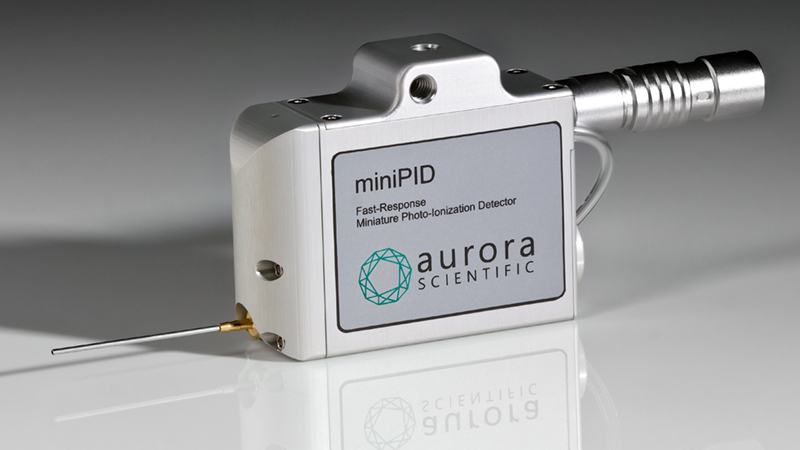While it might be easy to forget as a human, olfaction is a critical input for behavior in many animals. The neural mechanisms for sensing, learning and processing odors are complex, and noses (or antennae) must be sensitive to allow an animal to respond appropriately to minute concentrations in the air in order to, for example, detect a predator, forage for food or find a mate. Even humans, in spite of our relatively underused noses, can detect about one trillion smells.
So in order to study something so sensitive, you need sensitive equipment, making Aurora Scientific’s miniPID fast response olfaction sensor a great tool for olfaction research.
Here are two case studies highlighting its application in olfaction research using drosophila and mice.
Representations of Novelty and Familiarity in a Mushroom Body Compartment
As published in Cell, Hattori et al. identified neural circuitry responsible for drosophila’s differentiation between a novel and familiar odor. They focused their work on the mushroom body, a structure in the brain of drosophila known to support olfactory learning and memory. In the study, odors were delivered at regular intervals using an olfactometer and the miniPID photo-ionization detector to accurately measure the odor concentration. Neuronal activity was assessed with two-photon calcium imaging.
In response to a novel odor, they found that the α′3 compartment of the mushroom body is innervated, eliciting an alerted response in the fly. However, upon subsequent exposure to the same odor, neural circuits of the α′3 mushroom body are strongly suppressed, similarly suppressing alerted behavior to a novel stimulus. Importantly, this work identified the neural mechanism mediating drosophila’s differentiation between a novel and familiar odor.
In the study, odors were delivered using an olfactometer, using the Aurora Scientific miniPID photo-ionization detector to accurately monitor odor delivery for consistency of stimulus presentation.
Spontaneous activity in the piriform cortex extends the dynamic range of cortical odor coding
It has been established that sensory neurons often spontaneously activate even in the absence of relevant stimuli. Previously, the origin and function of this ‘noise’ has been unclear. Tantirigama et al. investigated the purpose of spontaneously activating neurons in the sensory paleocortex of mice – the brain’s olfaction command center. They ask, “Is this background activity a bug or a feature of neural circuits?”
Using in vivo two-photon calcium imaging, they first confirmed that the olfactory neurons exhibited spontaneous activity. Then, using an olfactometer and the miniPID photo-ionization detector to accurately deliver an odor, they found that two populations of neurons split: some olfactory neurons fired more strongly, while others had their activity suppressed. This bidirectional change around an elevated baseline substantially extends the dynamic range of odor responsiveness.




